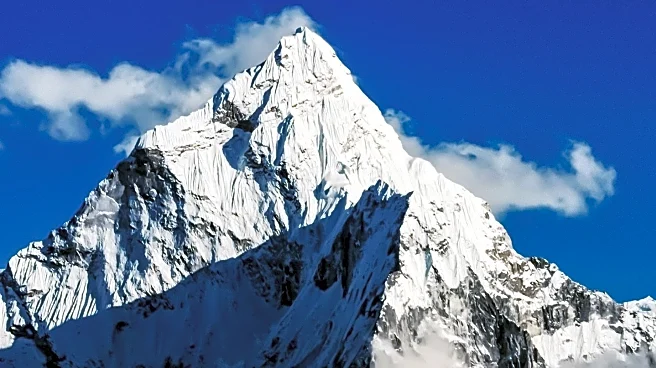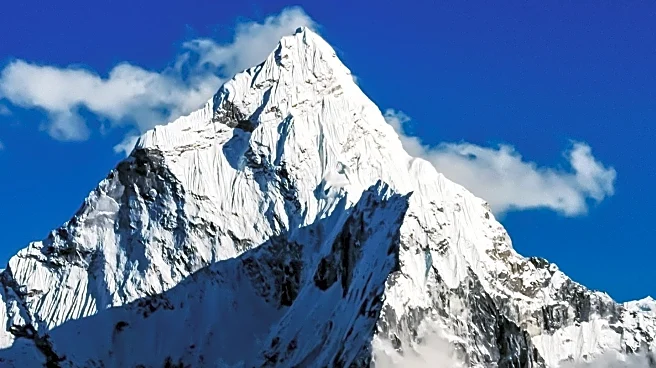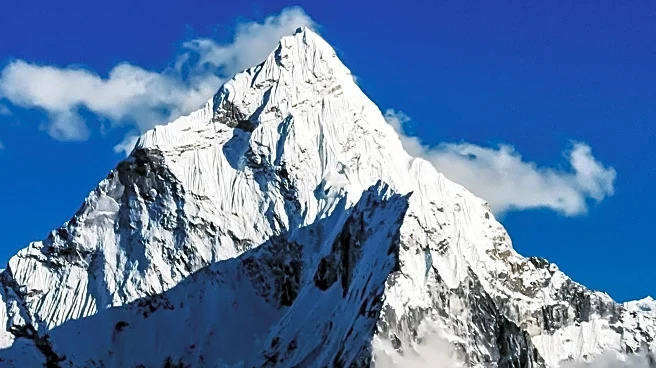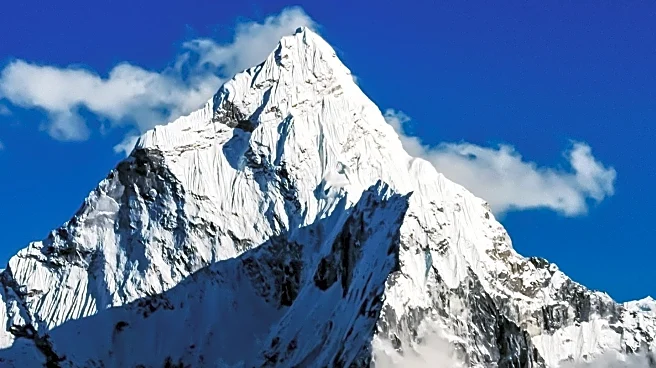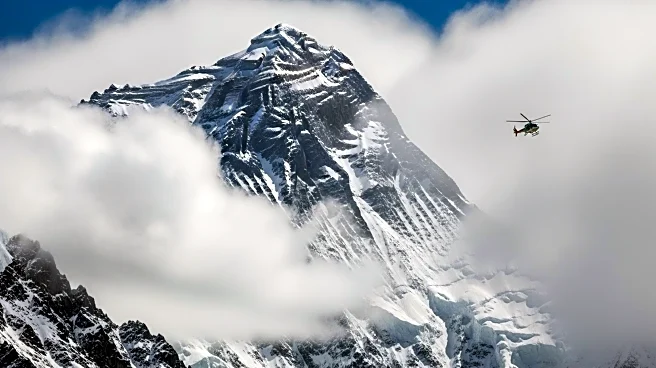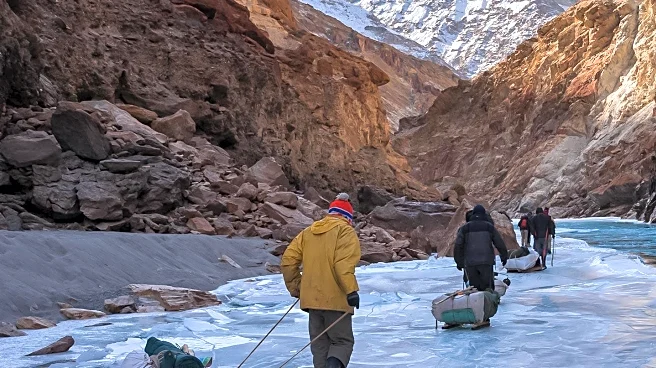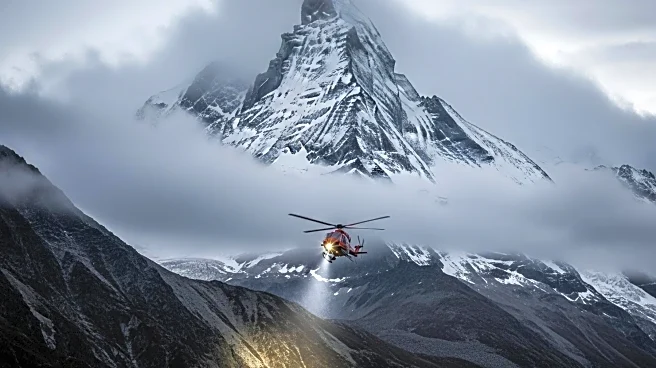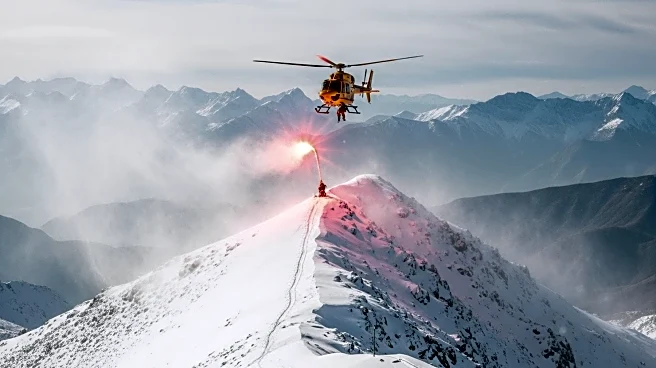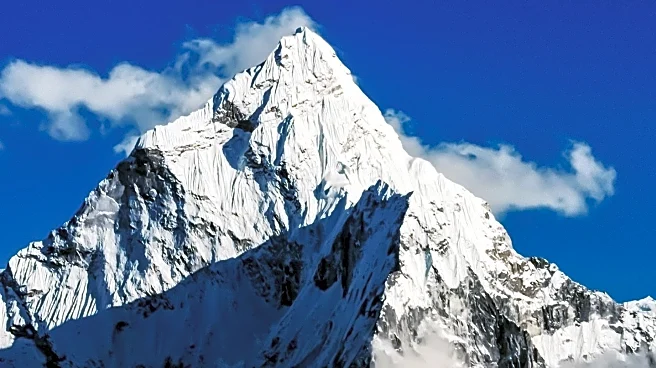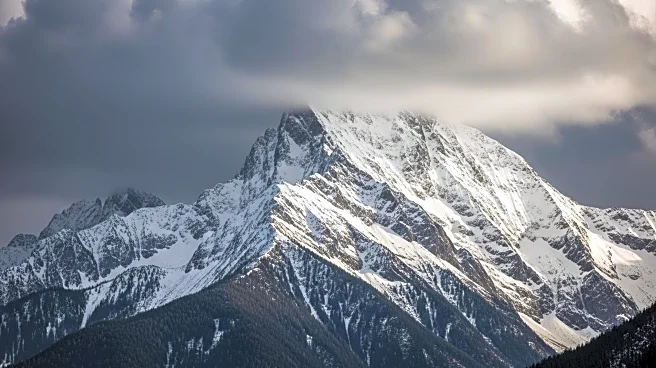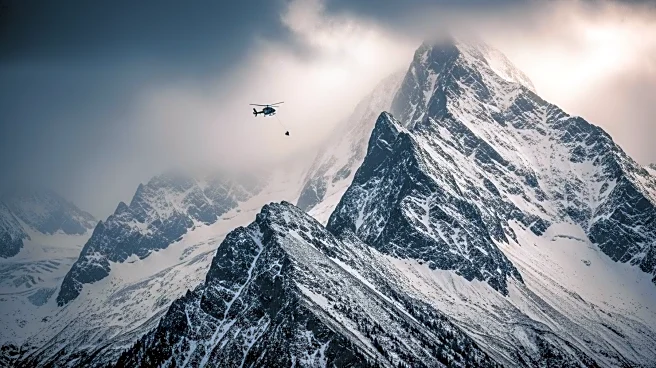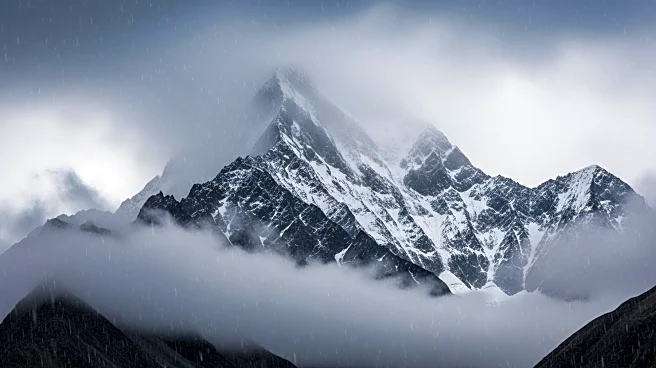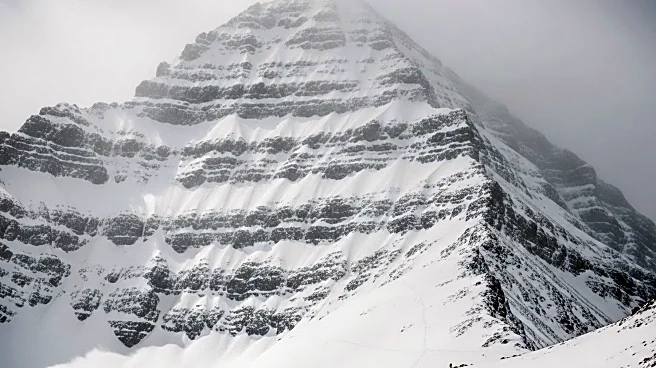What is the story about?
What's Happening?
A severe snowstorm has trapped nearly 1,000 trekkers near the eastern face of Mount Everest in Tibet. Rescue operations are in progress, with villagers and rescue teams working to clear snow and relocate the stranded individuals to safety. The trekkers, caught off guard by the sudden and heavy snowfall, were visiting the area during China's National Day holiday. The snowstorm has led to the suspension of entry to the Everest Scenic Area. Reports indicate that some trekkers suffered from hypothermia due to the extreme weather conditions.
Why It's Important?
The incident highlights the unpredictable nature of weather in high-altitude regions and the risks associated with trekking in such areas. The rescue efforts underscore the importance of preparedness and the role of local authorities and rescue teams in ensuring the safety of tourists. The event also raises concerns about the impact of climate change on weather patterns, which can lead to unexpected and severe conditions. The tourism industry, particularly in regions like Tibet, may face challenges in managing such risks while ensuring the safety of visitors.
What's Next?
Rescue operations are expected to continue as authorities work to ensure all trekkers are safely relocated. The incident may prompt a review of safety protocols and emergency preparedness measures for trekking in high-altitude areas. There could be increased scrutiny on the impact of climate change on tourism and the need for adaptive strategies to mitigate risks. Local governments and tourism operators may need to enhance communication and safety measures to prevent similar incidents in the future.
AI Generated Content
Do you find this article useful?
